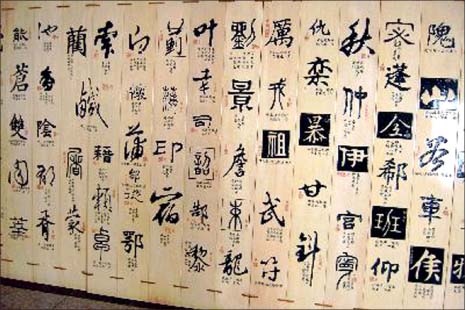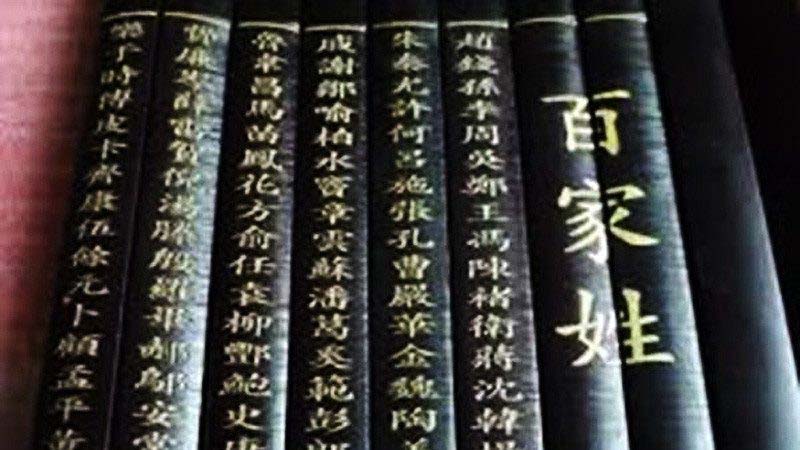During the Northern Song Dynasty (960-1127), the book A Hundred Chinese Clan Names became popular. In it are collected all the Chinese surnames in use at that time, arranged in four-character lines of which all even-numbered ones are rhymed.
Although there is no coherence in subject and no apparent connection between one line and the next, the lines read smoothly and were easy to remember.
The book begins with these two lines: Zhao Qian Sun Li, Zhou Wu Zheng Wang.
This was because the founding emperor of the Song Dynasty had surname Zhao, which therefore became the symbol of the state and so occupied the first place in the list of surnames.
The order of the other surnames is basically a reflection of the political status of the families that bore them.
The practice of deciding the status of a man by his surname did not begin with the Song Dynasty.
Before the unification of China by the First Emperor of Qin, family name and clan name were two different but related concepts.
Family name denoted consanguinity; one was born to it. Later, when the aristocracy became more and more conscious of their status, the use of clan names began.
Clan names were adopted from the names of principalities, ranks or territories conferred on the aristocracy by the ruler.

During the Warring States Period (475-221 B.C.), the family name system and the clan name system got confused and after the unification of the country in the Qin Dynasty (221-207 B.C.), the two merged.
However, it was not until the Han Dynasty (206 B.C.-220 A.D.) that an integrated surname system became fully established.
Towards the end of the Eastern Han Dynasty (25-220), a special social stratum consisting of big powerful families took shape as high officials and big landowners began to exert their political and economic powers.
These families were dubbed gaomen (literally high gate) which meant a “socially and politically influential family.”
Later, Emperor Xiao Wen Di of Wei designated the four well-known surnames of his day – Lu, Cui, Zheng and Wang – as gaomen.
The family of Li sent a representative to plead with the sovereign to include Li among gaomen. He not only failed but Li became the laughing stock of the day.
In feudal times, marriage could only be arranged between matching families. In other words, someone born to gaomen would never be permitted to marry another of humble origin.
During the Qing Dynasty (1644-1911), Kong was given first place for the purpose of promoting Confucianism and inculcating respect for the great thinker and educator.
In feudal society, the emperor had the prerogative of granting his surname to officials who had performed outstanding service.
A Hundred Chinese Clan Names contains 438 single-character and double-character Chinese surnames.
According to statistics, there are in fact more than 5,600 surnames that have existed in Chinese documents are still existent. — First published in Tulay Fortnightly, Chinese-Filipino Digest 25, no. 21 (April 9-22, 2013): 13.





